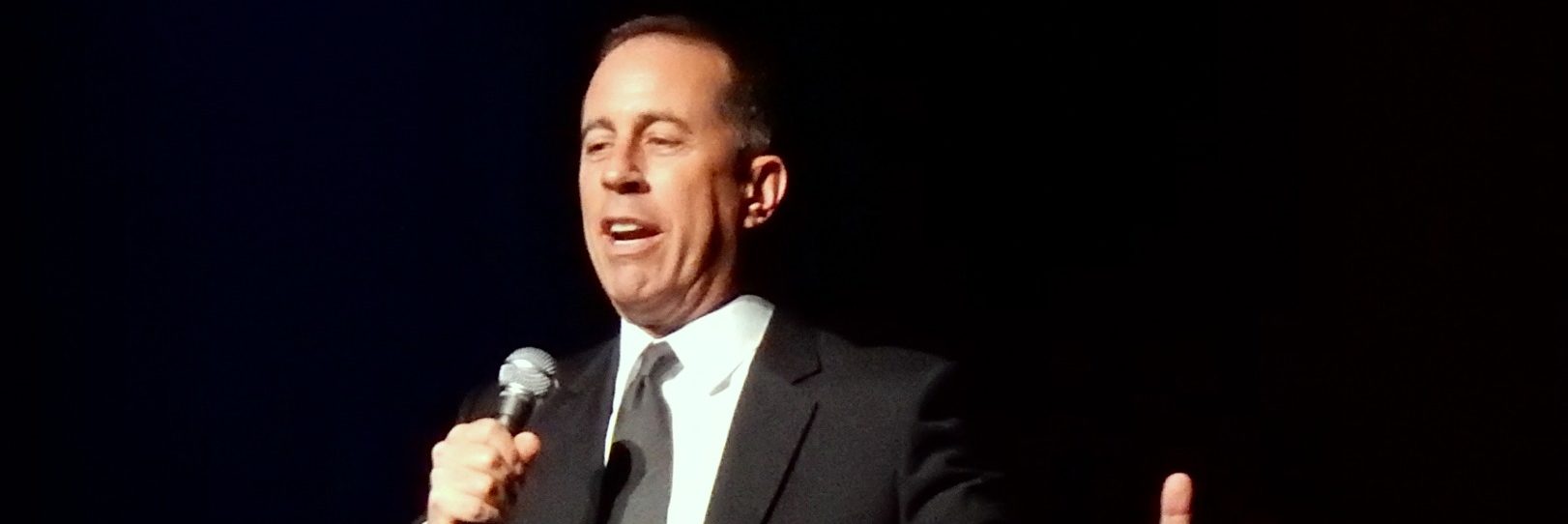This NY Times video of Jerry Seinfeld explaining his joke-writing process has been floating around the Internet for years, so you may have seen it already. But it’s well worth revisiting, especially on Fat Tuesday, a day devoted to jollity.
Watching this (for the umpteenth time), I’m struck by how many of Seinfeld’s lessons for joke-writing apply to writing of all kinds. Here are a few:
Lesson #1–“Think of something you think is funny [or interesting] and go from there.”
Does this one seem obvious? I’m not sure it is. Writers spend a lot of time agonizing over whether they have anything interesting or worthwhile to say. They devote a lot of energy to trying to predict what other people will find interesting or funny or compelling.
The only reliable way to write about topics that will interest your reader is to write about topics that interest you. Just as one of the great pleasures of friendship is to introduce your friends to your other friends, one of the great pleasures of writing is to introduce material you care about to people you care about. If you care enough about your material, your reader will care too. Here’s a secret: readers don’t know what they’re interested in until you tell them.
I often write about swamps. Why? Because I conducted lengthy market analysis and realized that what juvenile readers wanted was more swamps. No, that’s not true. I write about swamps because I’ve always loved swamps. I once got an email from a family who, after reading my Wilderking books, decided to spend their Spring Break at the Okefinokee Swamp. It was one of the greatest days of my writing career.
Special note for children’s writers: PLEASE don’t write jokes that you think kids will find funny if you don’t find them funny yourself. There is a certain kind of joke that prevails on Nickelodeon and the Disney Channel; unless the grown-up writers of those shows are half-wits, there is no way they think those jokes are funny.
Lesson #2 “I like for the first line to be funny [or interesting] right away.”
This one may seem self-evident too. Everybody knows the importance of starting strong in a piece of writing. You want to grab your reader by the shirt-front and make sure you have his attention.
I just want to make one clarification: your finished product needs to start funny or interesting or compelling. But your writing process has to start wherever it starts. Do whatever it takes keeps the pen moving; don’t wait for something brilliant, or you may not get started. In Lesson #1 above, Seinfeld said “Find something you think is funny and go from there.” That phrase “and go from there” is so important. You start writing, you see where it takes you, and chances are you’ll see what your brilliant beginning and your stunning conclusion are going to be. But you have to be open to the possibility (indeed, the likelihood) that you don’t know what you’re writing about until after you start writing.
Seinfeld says to start strong and to finish stronger. That’s great advice, but bear in mind that it’s editing advice, not drafting advice. As you can see from Seinfeld’s painstaking process, this brilliance isn’t coming out of him fully-formed.
Lesson #3–The power of specificity: “The back of my head blew right off.”
I am forever telling my students to be more concrete, more specific. The following sentence is a perfect illustration of what I mean: “When I was a kid and they invented the Pop Tart, the back of my head blew right off.”
Look what Seinfeld has done with that clause “the back of my head blew right off.” This is simply a restatement of the cliche, “it blew my mind,” but with very concrete, very specific language. What if Seinfeld had said, “When I was a kid and they invented the Pop Tart, it blew my mind”? That would have been funny. But “the back of my head blew right off” is quite a bit funnier and more interesting (though, admittedly, coarser). The concrete, sensory image of the back of little Jerry’s head blowing off gives you something to look at.
Writing instructors tell their students to avoid cliches. In this case, Seinfeld doesn’t avoid the cliche. He simply disguises the cliche by restating it in concrete and specific terms. And it works. When you hear “it blew my mind,” you don’t envision anything. It’s just a thing people say. When you hear “the back of my head blew right off,” you can’t help but envision something. That is the power of concrete, specific language.
Lesson #4–Five Senses, Plus Movement: “Shredded wheat, like wrapping your lips around a wood chipper”
This one is really just a continuation of Lesson #3. Concrete language is sensory language. You have five senses; appeal to as many of those five senses as you can. Visual imagery and sound imagery are the low-hanging fruit. It almost goes without saying that you need to give your readers something to look at and something to hear. But if you can add smell, taste, and/or touch (texture), you are really rounding out the sensory appeal of your writing.
I think of texture as kind of a secret weapon in descriptive writing. Your reader is probably not expecting you to talk about texture, so it is doubly effective when you do. I love Seinfeld’s description of the texture of shredded wheat. I didn’t see it coming, and yet it awakened sensory memories of struggling through many bowls of shredded wheat.
Another trick is to introduce movement and action anywhere you can. The idea that eating shredded wheat is like wrapping your lips around a wood chipper doesn’t just introduce texture; it introduces a very strong kinetic sense. Or think about Seinfeld’s description of hacking away at frozen orange juice with a knife. Again, that’s a lot of movement where you probably weren’t expecting to see movement.
We love Jerry Seinfeld and other comedians because they have such an unexpected vision of the world. How does a person even come up with the idea of comparing shredded wheat to a wood chipper? How does a person think to talk about hacking away at frozen orange juice with a knife? Well, one way to generate new and surprising ideas is to make yourself consider all five senses AND the movements associated with the scenes you’re trying to depict. I’m not promising we’ll all be Jerry Seinfeld, but this is a place to start.
Lesson #5–Proportion: “In the midst of that darkness and hopelessness, the Kellogg’s Pop Tart appears.”
Finally, a word about proportion.The idea that the Pop Tart brought enlightenment and hope into a world of darkness and hopelessness is funny because it is so exaggerated. We can’t possibly take it seriously, so we laugh. Disproportion is almost always funny. This is something to keep in mind when you’re writing funny. But it’s also something to keep in mind when you’re trying to be serious. Especially when you are writing to persuade, it can be tempting to exaggerate in hopes of making your reader take seriously the things you care about. It doesn’t work. Discerning readers can’t take disproportion seriously.
Really, these five lessons just skim the surface of this 5-minute video. Seinfeld makes it look easy, but in fact he’s a meticulous writer who cares a great deal about his craft.
Photo by slgckgc – https://www.flickr.com/photos/slgc/30563423454/, CC BY 2.0, https://commons.wikimedia.org/w/index.php?curid=58914951








